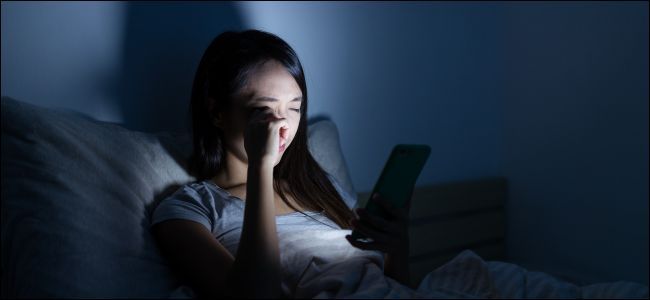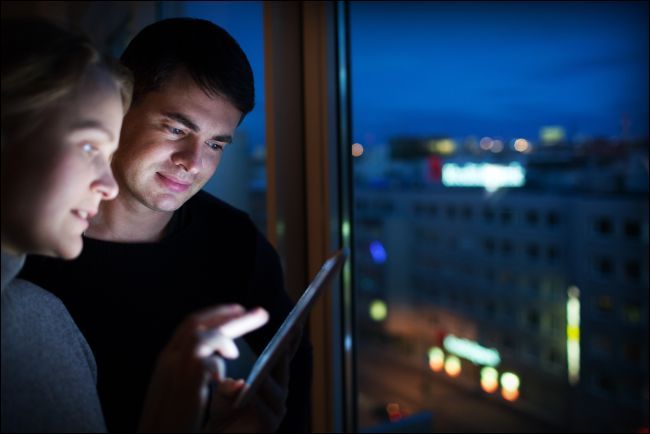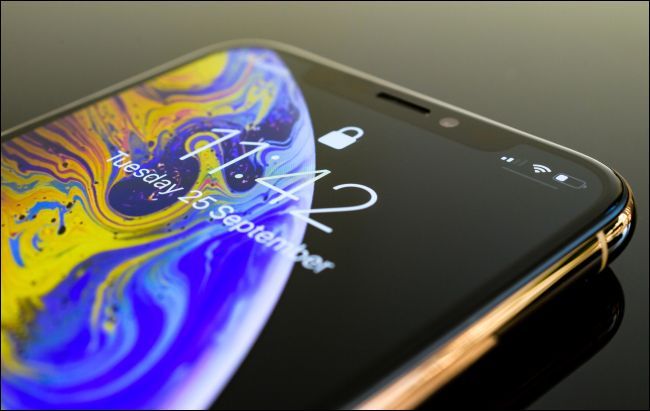Quick Links
Dark mode is everywhere these days, and the backlash has begun. As Adam Engst points out over at TidBITS, dark-on-light backgrounds are better for readability. But "Dark mode can hurt your productivity" isn't the final word. Dark mode is great.
The Case Against Dark Mode
Windows 10 and macOS have already embraced Dark Mode, and it's coming to iOS 13 and Android Q. Chrome and Firefox have their own dark modes. Even File Explorer on Windows now supports dark mode. Once a niche feature beloved by geeks, dark mode is becoming a built-in option in every big operating system. That's amazing.
But the critics are right---some of the promotion around dark mode is silly. Apple's website says dark mode on macOS is "easy on the eyes---in every way." That's not entirely true.
Engst highlights vision research that demonstrates dark-colored objects on light backgrounds are easy to view. In other words, black text on a white background is better than white text on a black background.
He highlights studies that have shown black-on-white ("positive polarity") text is more readable:
To summarize, a dark-on-light (positive polarity) display like a Mac in Light Mode provides better performance in focusing of the eye, identifying letters, transcribing letters, text comprehension, reading speed, and proofreading performance, and at least some older studies suggest that using a positive polarity display results in less visual fatigue and increased visual comfort.
Engst does a good job of highlighting the problems with dark mode and explaining why it's not a good option for everybody all the time. Despite the hype, dark mode won't necessarily help reduce eyestrain after you spend all day staring at a display. Dark mode isn't a one-size-fits-all improvement for everyone. That's why it's an option---one that's not enabled by default.
But let's not abandon dark mode just yet: We love dark mode, and we've loved it since before the big tech companies embraced it. Dark mode has real practical advantages, too.
Dark Mode Is Awesome in a Low Light Environment
Dark mode is great in low-light environments. If you're lying in bed reading something on your phone at night, it's a lot nicer to read white text on a black background rather than have your face illuminated by a lot of bright white light. A dark black screen is a lot less disturbing to anyone else sleeping next to you, too.
Sure, you could just reduce your screen's brightness in dark environments, but then you're squinting at a dim screen trying to read the text. We know from our own experience just how much better it feels to stare at a mostly-dark screen in a dark room. Sure, it may be faster to read dark text on a white background, but that's not always what matters.
Similarly, you might want to use dark mode when using your laptop in a dark room at night. If you prefer it, then go ahead!
And sure, you probably shouldn't be laying in bed at night staring at your phone. It's not good for your sleep, and getting a good night's sleep is essential for your overall health. But there's a good chance you're going to do it some anyway---we do it, too.
Dark Mode Is Better for Some People
While dark text on a light background is undoubtedly ideal for most people, especially in bright environments, that isn't universally true. As Google points out in its explanation of Android's new dark theme for developers, dark mode "improves visibility for users with low vision and those who are sensitive to bright light."
For example, some people have "photophobia," which can cause bright light to trigger migraines. Dark mode could help these people.
Other people may have vision conditions that make it easier to read bright text on a dark background. That's why the "invert colors" option has been part of operating systems like Windows, Android, and Apple's iOS even before dark mode became trendy.
But dark mode is better than those accessibility options: It just looks nicer. For many people who need dark interfaces, dark mode will be a slick upgrade over clunky solutions like the old Windows "high contrast" theme.
Dark Mode Saves Battery Power on OLED Displays
From a battery power perspective, dark mode is superior to light mode on devices with OLED displays. That's just how OLED screens work: When a pixel is showing true black, that pixel is turned off and not drawing power. This saves battery power. (On a traditional display, the backlight is on the entire time, and the same amount of power is used whether a pixel is displaying black, white, or any other color.)
In other words, with an OLED display, it takes less power to show a black screen with white text than a white screen with black text. Google once said YouTube's dark mode could save between 15% and 60% battery life---depending on the screen's brightness.
There are some gotchas here. For one, most devices don't have OLED displays. Apple's iPhone XS, XS Max, and X use OLED panels. Apple's other iPhones and iPads---not even the iPhone XR. Samsung's flagship Galaxy phones and Google's Pixel phones use OLED displays, but many Android phones don't.
When it comes to laptops, few laptops have OLED displays. No MacBooks do, but a few manufacturers announced OLED laptops at CES 2019.
Here's another gotcha: There are only power savings if the pixel is completely black. In other words, that's color #000000. If a pixel is just very dark gray or almost-but-not-quite black, you won't see power savings. Many dark modes are embracing dark grays for aesthetic reasons rather than the true blacks required for real power savings on OLEDs.
Should You Use Dark Mode? Only If You Like It!
So is dark mode good or bad? Should everyone use it or should no one? We don't have a one-size-fits-all answer to this question---sorry!
If you don't like dark mode, don't use it. Yes, it's trendy, but it's not necessarily easier on your eyes. In bright environments, light mode could be easier on your eyes and make you more productive.
If you do like dark mode, use it! Even in a light environment, if you prefer that look and don't have trouble reading your screen, go ahead and use dark mode. There's more to life than chasing small incremental improvements in theoretical productivity.
Or, even better, be context sensitive. Enable dark mode at night or in dark environments and use light mode during the day. You can automatically enable Windows 10's dark theme at night via the Task Scheduler or enable dark mode at sunset on macOS with Night Owl. Apple's iOS 13 will let you automatically enable dark mode at sunset.



